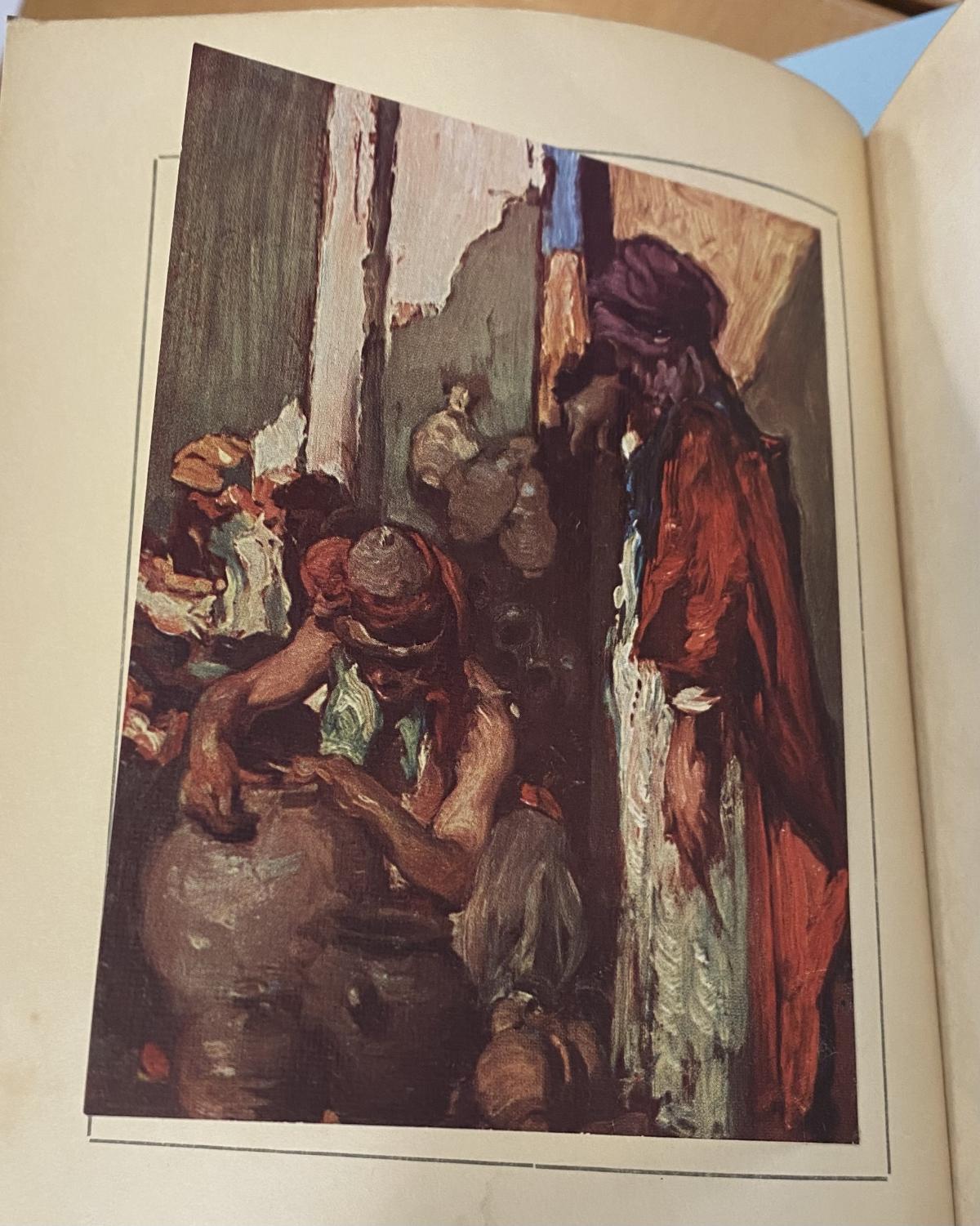This edition of Rubaiyat of Omar Khayyam is written by Omar Khayyam and translated by Edward FitzGerald. It was published by T.N. Foulis in 1910. It is illustrated by Frank Brangwyn. This edition is Seventy-one pages. The illustrations throughout this edition are pictures of parts of several oil paintings by Brangwyn, each illustration is accompanied by a cover page with a quote from the Rubaiyat to accompany the picture and a note with Frank Brangwyn’s name. The illustrations seem to be glued onto the pages sporadically through the book. The oil paintings are full of vivid colors, and they all contain pictures of people. Frank Brangwyn was an artist from Belgium. He was born May 12, 1867, and died June 11, 1956. Brangwyn did more than just oil painting, he was known for stained glass, furniture, ceramics, and as a woodcutter, among many other things. He started painting and selling paintings at age of seventeen. Brangwyn convinced sailors to let him sail with them to Istanbul, while using it as material for many of his painting. He was commissioned to design and paint many different projects for people including St Aidan’s Church and Robert Hawthorn Kitson. Later in his life, Brangwyn became very depressed and pessimistic. He donated many of his paintings and other artworks to museums and individual galleries. His style is whimsical and sort of abstract, in the paintings in the book but, the rest of his work is very stylistic and planned. Below is an image of a man sculpting a pot of clay. The cover page reads “For in the market-place, one Dusk of Day, I watch’d the Potter thumping his wet Clay.” (fig 1)
This book is full of very beautiful and interesting features that are not seen in any other edition. Firstly, as soon as you open the book, you are greeted by intense, violet paper. Printed on the paper is a scene of a town, there are buildings and trees on the two-page display. On every page of the poem, including the introduction pages, there is a decorative border. There is a pattern with leaves and grapes forming a box around the text. In the corners of all the pages, there are hearts in all for corners, that match the light green or deep purple color of the leaves and grapes. These hearts match the gold, flaming heart that is on the cover. (fig 2)
In images 3, you can see the hearts in the corners, like the heart in the center.
Throughout the book, there are colored stamps of roses. The stamp matched the color of the border as well. Interestingly, the rose stamps are all different. The stamp never quiet looks the same. As seen in image three, as well as image four, five, and six. I think that this adds such an (fig 5,6,7)
Interesting addition to the book. It feels very personal, as if someone put them there for the reader to find. The book also has gold edges on the top of the pages. There is not gold on the sides or bottoms but, I think this is due to use. The edges of the pages are torn up and stained, they show signs of being a well-loved book (as seen in images 8,9).












